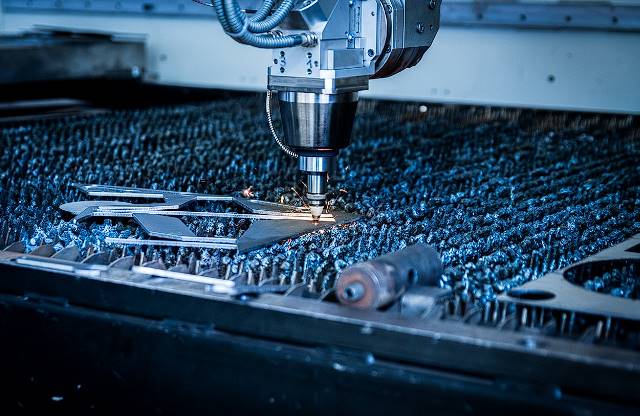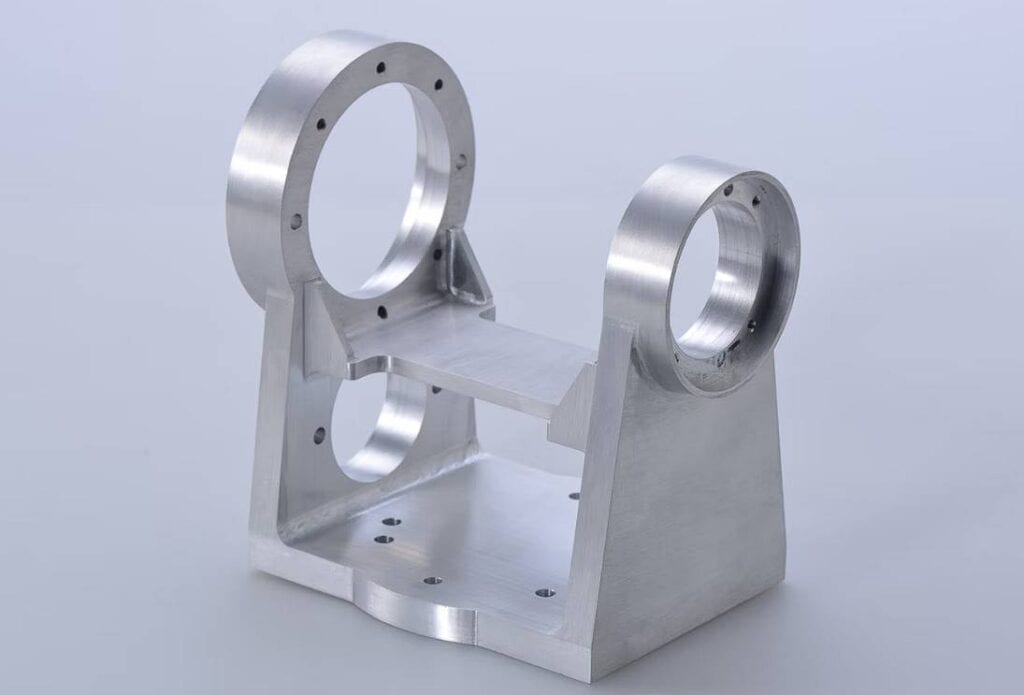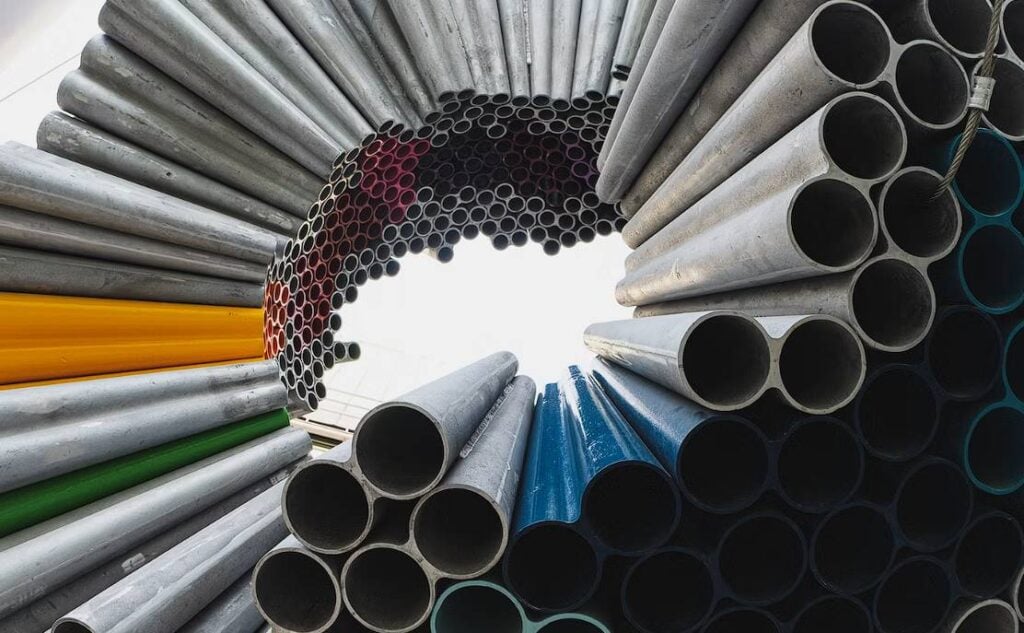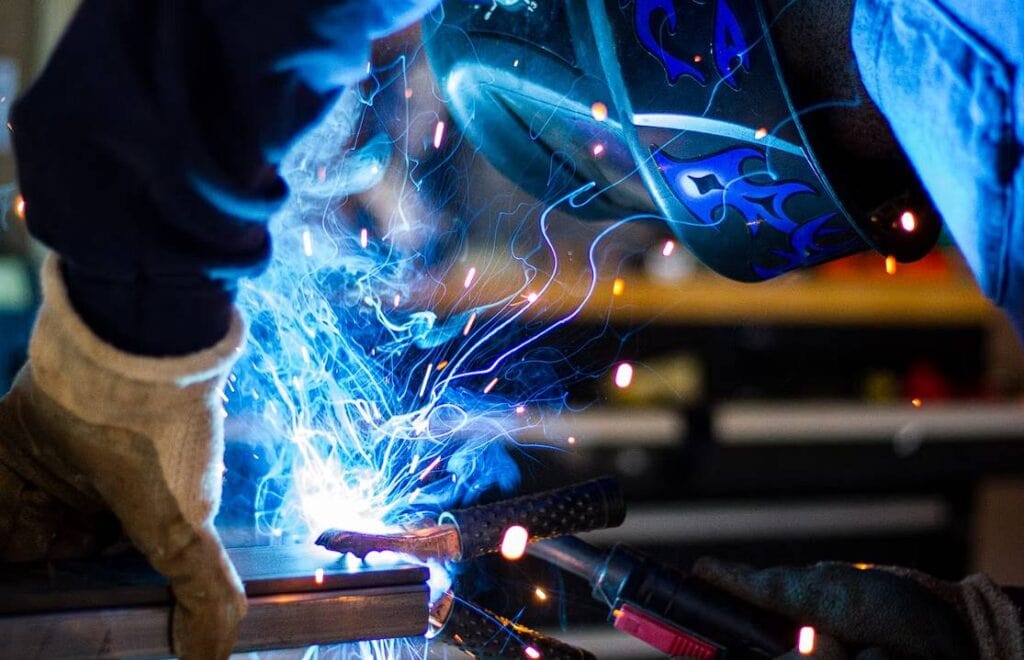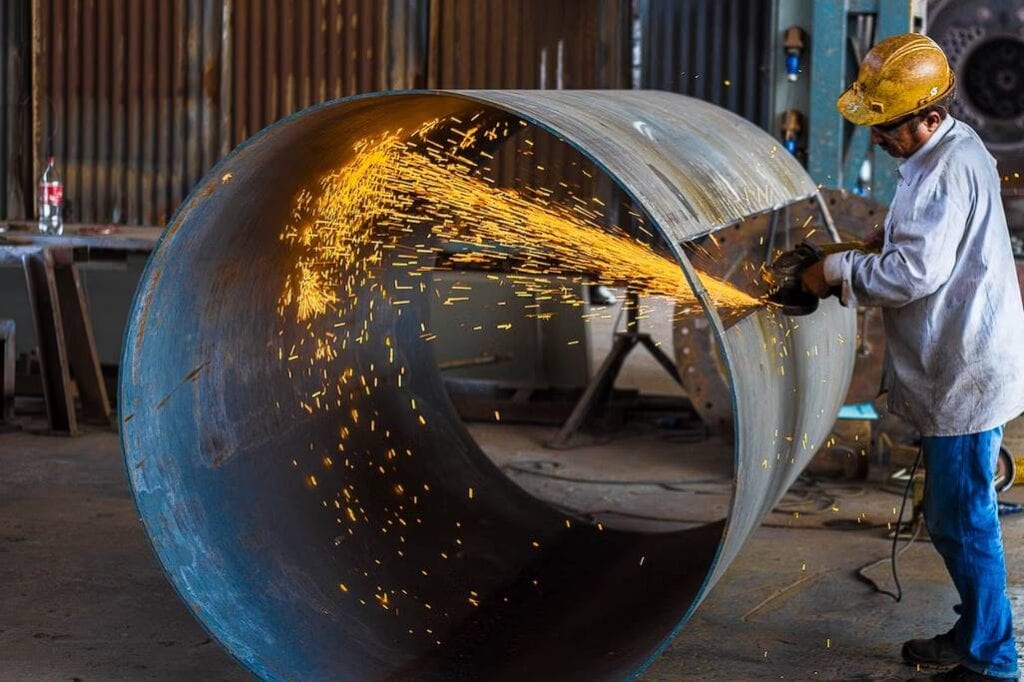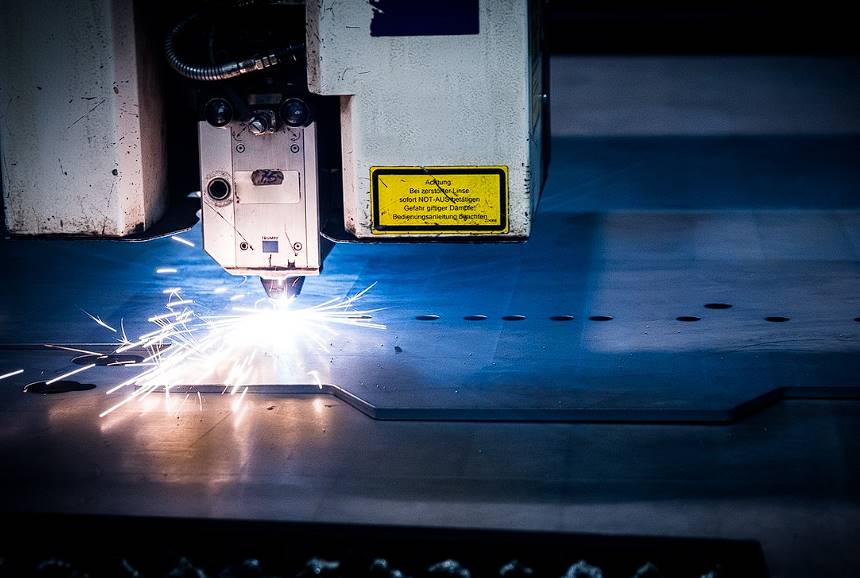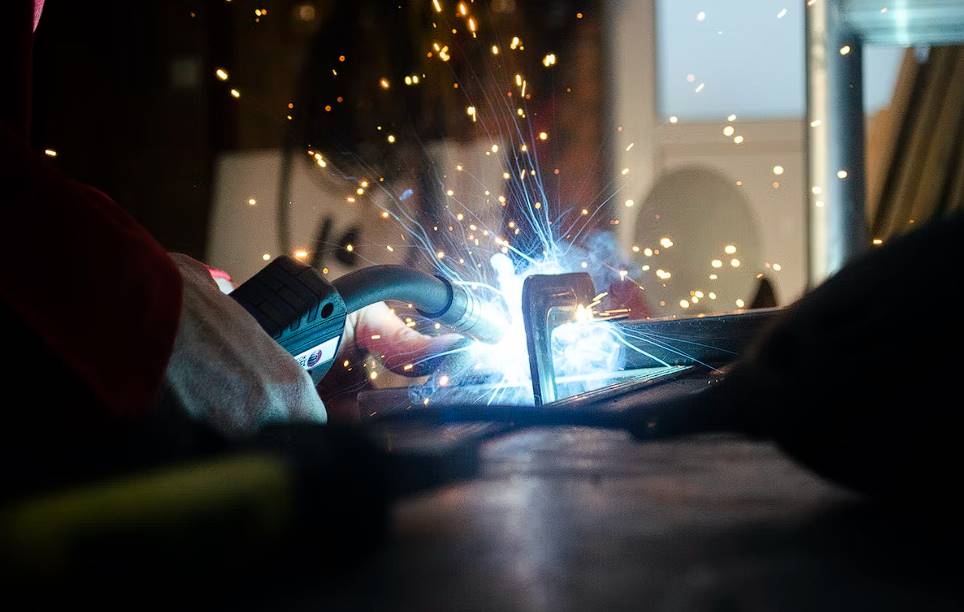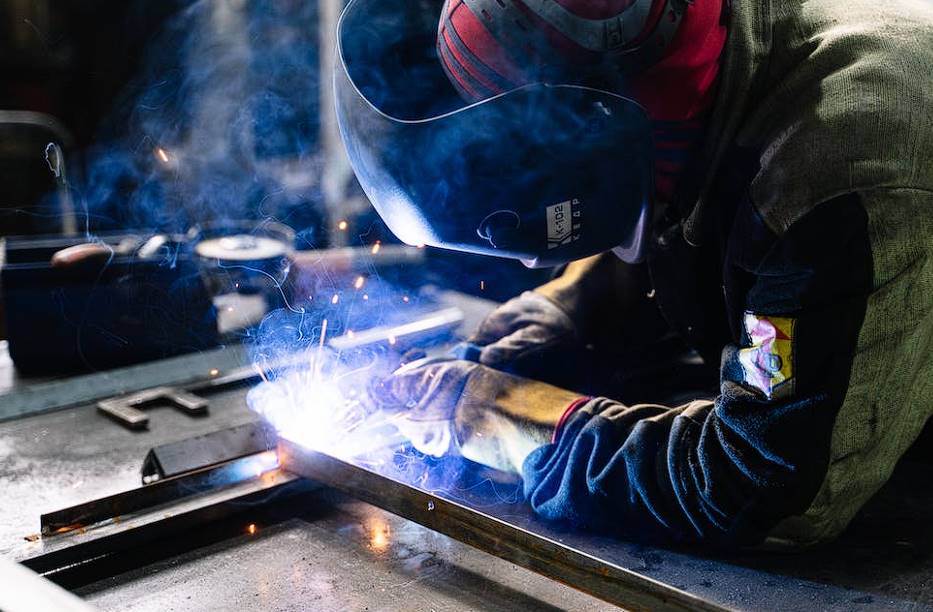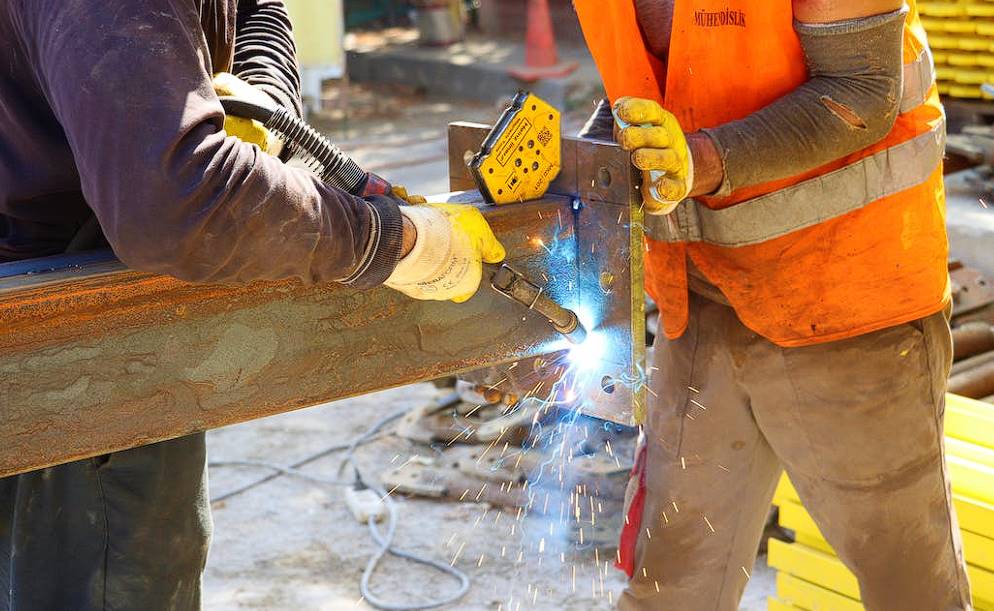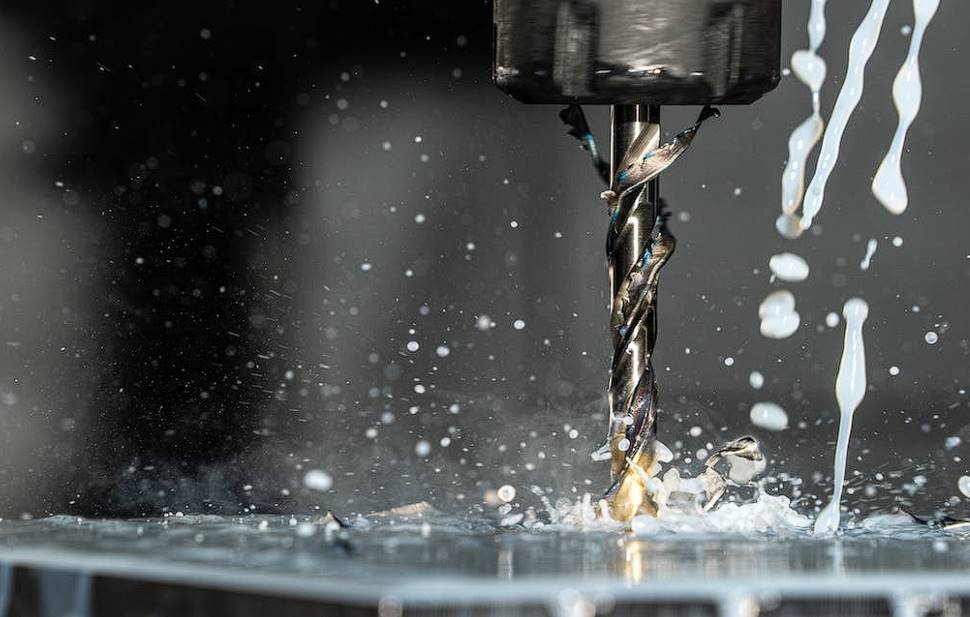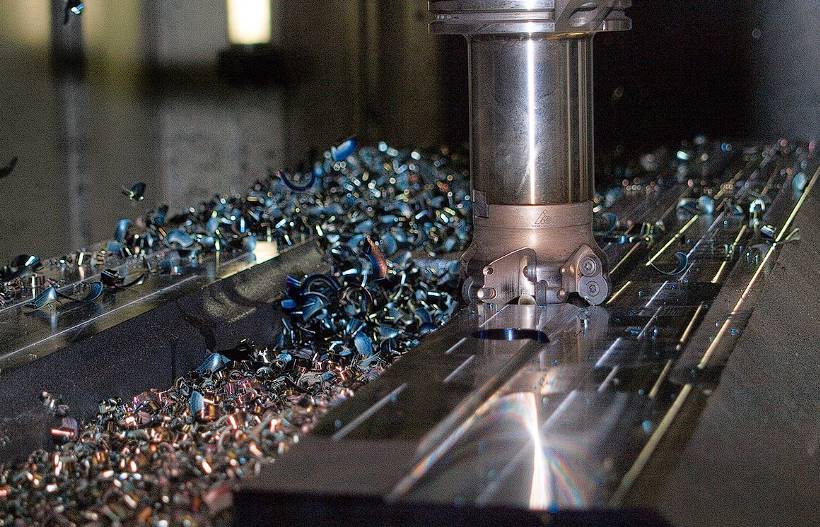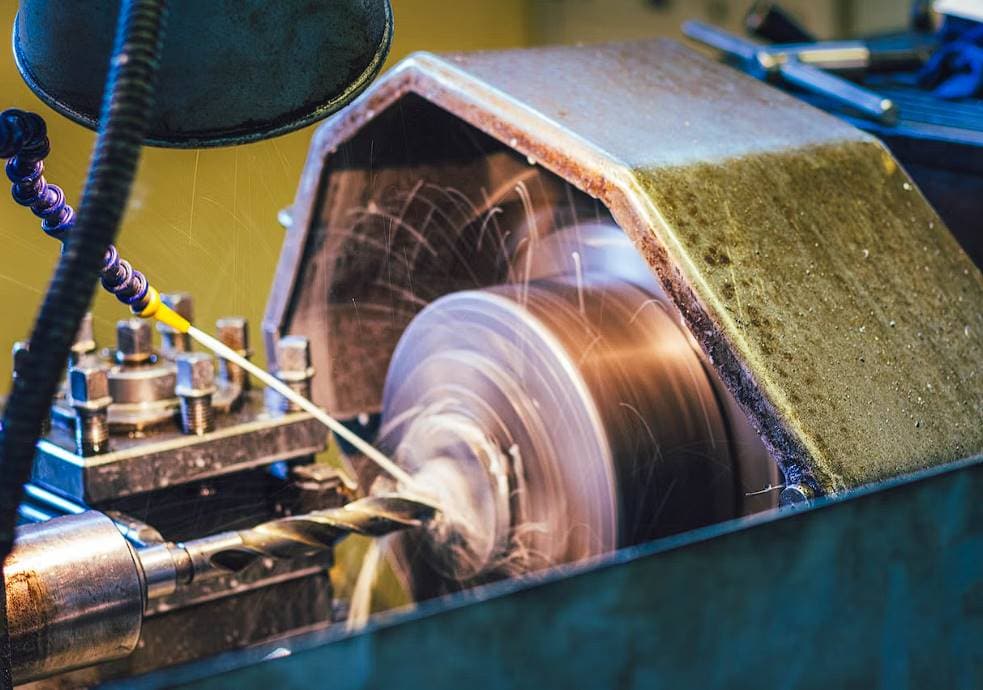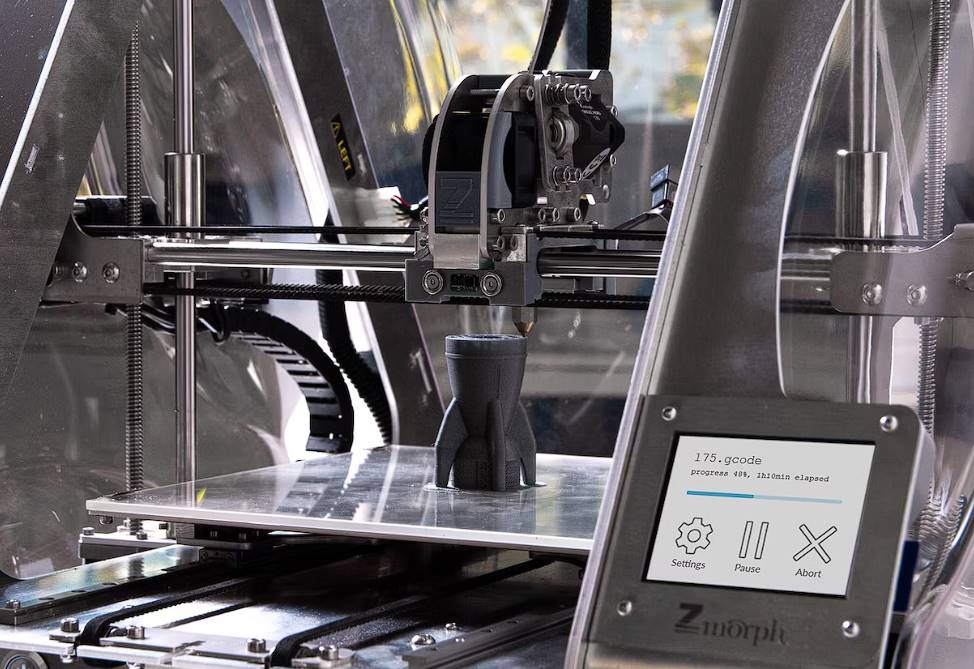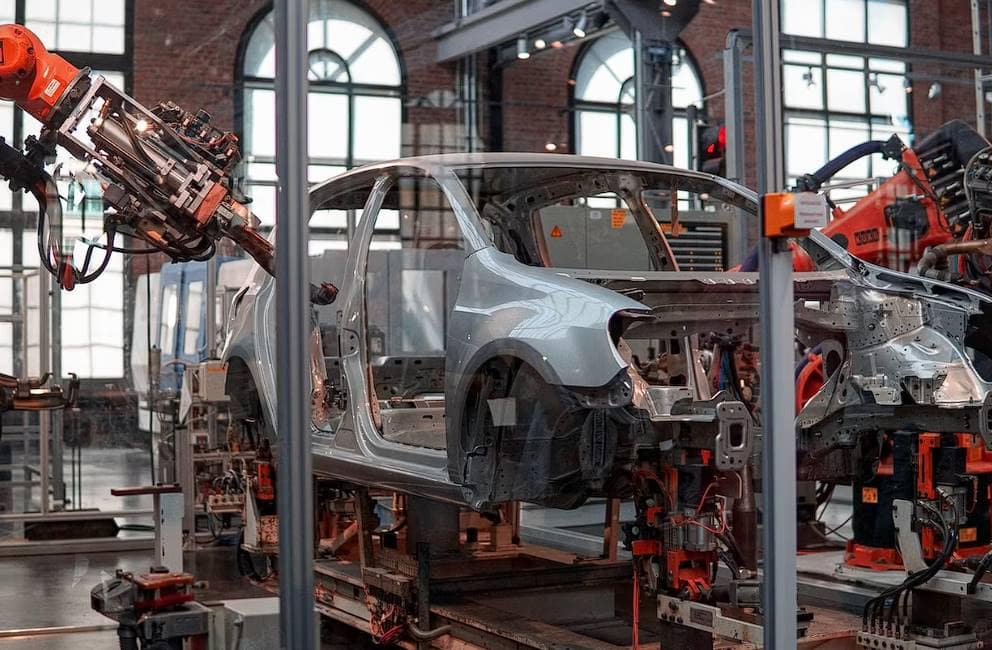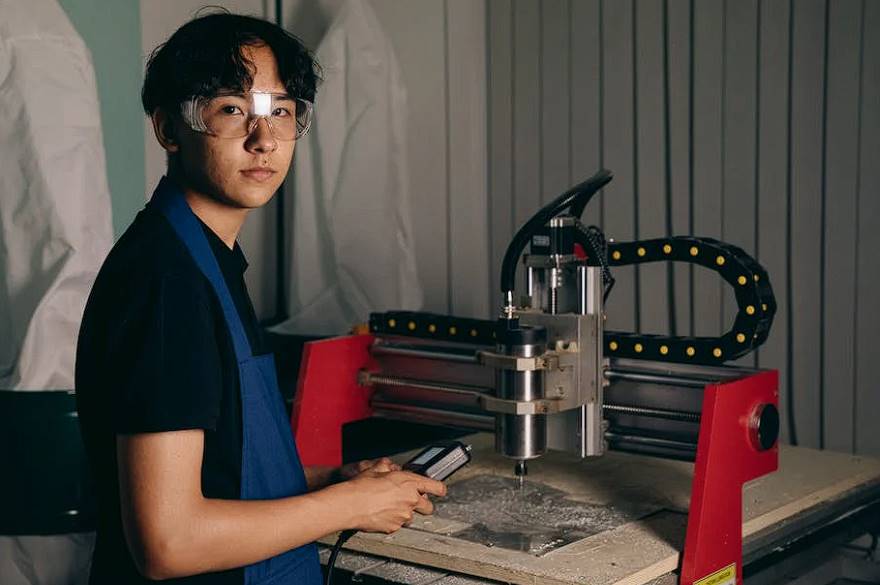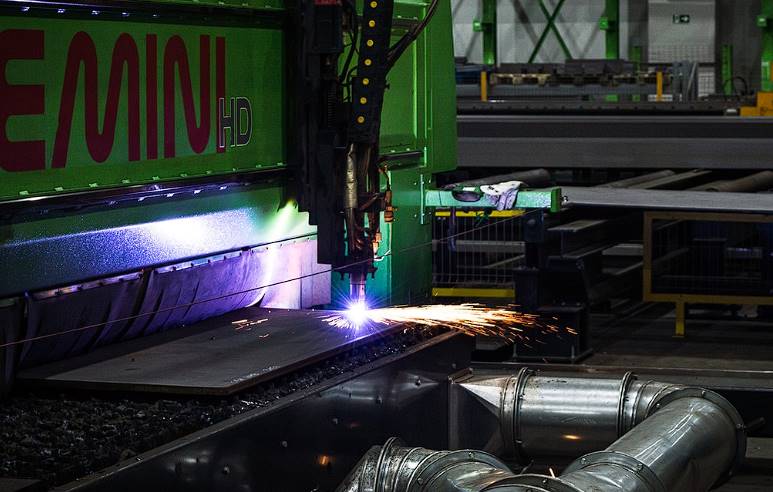When it comes to reliable fabrication services, no other method compares to laser cutting. Cutting into metal, plastic, glass, wood, and other materials in intricate patterns is the domain of this cutting-edge technology. Laser cutting is superior to other techniques, such as melting, engraving, burning, and vaporising the material.
This method employs a highly concentrated laser beam to cut the material blocks precisely to the desired dimensions and configurations. In many fields, this high-temperature fabrication process is now considered essential. Let's take a quick look behind the curtain and learn some cool information about laser cutting.
What Is Laser Cutting?
During the laser cutting fabrication process, a concentrated and highly-powered laser beam is utilised to vaporise material in order to carve out desired forms. CNC (computer numerical control) laser-cutting machines use a guidance system composed of computer software to focus and direct the laser beam onto the material being cut.
Metal, wood, plastic, fabric, and other materials can all benefit from being cut or engraved with laser precision during the manufacturing process known as laser cutting. A precise and clean cut is achieved by focusing a laser beam onto the material, which melts, burns, or evaporates. Since laser cutting has many benefits over conventional cutting methods, it has widespread use in many industries.
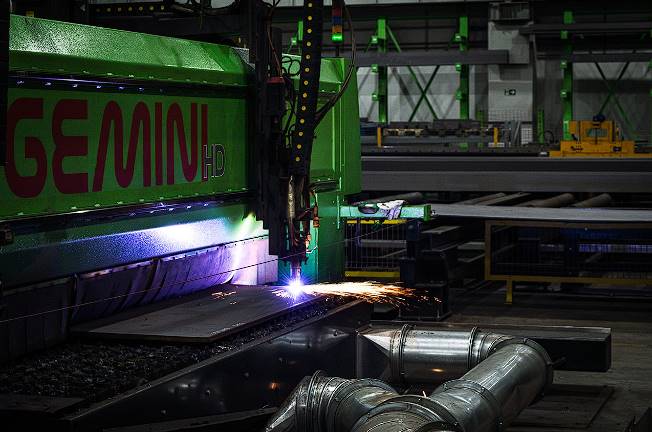
The Main Benefits Of Laser Cutting
Laser cutting is widely used in manufacturing because of its many advantages throughout a product's lifetime. The list below includes some of the most persuasive arguments in favour of laser-cutting machines being used by businesses around the world.
Material Compatibility
Wood, fabric, steel, acrylic, paper, plastics, nickel, titanium, and aluminium can be cut with a laser cutter's impressive versatility. Having such a wide range of applications means that specialised machinery for specific materials is not required.
This makes switching between different parts of a project simple and painless. Because of this adaptability, you won't have to invest in as many cutting tools, which will save you both time and money. Laser cutters are extremely flexible equipment that can cut through a wide range of materials, including metal and wood.
Precision And Accuracy
Incredibly, laser-cutting devices can focus their strong laser beam on a 0.001-millimeter-diameter surface region. Their ability to zero in on small areas with pinpoint accuracy allows them to make cuts of unrivalled quality.
Laser cutters not only produce a high-quality surface finish on the materials they cut, but they also guarantee precise and accurate cutting. Because of the precision with which the laser beam's focus can be adjusted, laser-cutting machines are often the preferred method for producing clean, precise cuts and flawless surface finishes on a wide variety of materials.
Relatively Cost-Effective
Laser cutting machines may be more expensive than alternative cutting methods, but they offer several ways to save money in the long run. However, since it is a non-contact process, damage to the material being cut is greatly reduced.
Additionally, it has low upkeep costs because it is remotely controlled by a technician, reducing the likelihood of human error. Finally, laser cutting is renowned for its precision down to the micron. Precision like this ensures that very few raw materials are thrown away.
Quick Turnaround Time
When it comes to the creation of complex and sophisticated parts with excellent precision and consistency, CNC laser cutting machines offer a significant edge. By reliably reproducing complex designs with tight tolerances, these machines guarantee quality at every stage of production. Moreover, they can produce cuts and edges of such high quality that they usually don't need additional treatments, cleaning, or finishing.
This improvement speeds up delivery and boosts output by greatly cutting production time and increasing overall turnaround time. Manufacturing complex parts to exact specifications at a low cost and in a short amount of time is now possible with the help of computer numerical control (CNC) laser-cutting machines.
Ways Laser Cutting Machines Are Unique
The process of laser cutting is intricate and intriguing, but the following interesting facts make the technology behind laser cutting even more fascinating.
Laser Cutting Began More Than A Half-Century Ago.
Using a laser for cutting sounds like a cutting-edge service, but the technology has been available for almost 50 years. The first laser-cutting machine was developed in the mid-1960s by scientists at the Western Electric Engineering Research Center, and technicians used it to cut diamonds.
Although laser cutting services seem cutting-edge now, the technology has been in use for well over 50 years. Western Electric Engineering Research Center scientists developed the first laser-cutting machine around 1960; technicians used it to cut diamonds.
It Can Focus To A Depth Of 0.001 Inches.
In terms of raw performance, laser cutting has the added benefit of superior surface finishing and cutting accuracy compared to alternative technologies. The powerful laser beam of a laser cutting machine can be focused on a surface area with a 0.001 mm diameter. The laser's accuracy allows for pinpoint aiming, even in confined spaces. A strong laser beam allows for precise cutting and a smooth finish for manufactured goods.
The Strongest Laser Cuts Hydrogen Bombs
The energy a laser puts out per second in the form of laser light is directly proportional to its power and is expressed in watts. The original name for the unit of measurement for laser power, "Gillette," came from the number of razor blades that could be cut through by the laser beam.
On the other hand, the intensity of a laser is determined by dividing the laser's power by the region over which it shines. This metric is useful for determining the level of energy density in a specific area. To demonstrate the extraordinary power and precision of modern laser technology, the most powerful laser beam can now penetrate the formidable resistance of a hydrogen bomb.
Some Laser Cutting Machines Can perform Welding.
A wide variety of laser-cutting machines are available, some of which are even capable of welding. Welding capabilities are standard on CO2 and Nd: YAG laser cutting machines but not on Nd machines. Nd: YAG laser cutting machines, on the other hand, aren't built for welding.
Despite this drawback, laser-cutting machines shine in situations where a low or non-existent need for repetition exists. Because of their one-of-a-kind properties, they are ideal for uses that call for clean cuts without the need for welding. Laser cutting machines provide versatile options to meet a wide variety of welding and non-welding cutting requirements in the fabrication industry.
Laser Cutting supports more Than 25,000 Applications.
As Industry 4.0 approaches, laser-cutting technology is used to complete hundreds of tasks. More than 25,000 high-powered laser-cutting applications are used by businesses to complete one-off projects. Companies can use laser machines to cut various materials, from wood and fabrics to paper and metals.
To improve the efficiency of the fabrication process, many businesses in Melbourne, Brisbane, and other locations are now offering professional laser-cutting services.
Laser Cutters Are Safe For The Environment
Laser cutting is a safer and more environmentally friendly alternative to traditional fabrication methods. Because of the accuracy of laser cutting technology, less material is wasted, and fewer harmful gases are released, all within a contained, easily ventilated interaction chamber. As a result, this method of production is very kind to the environment.
Laser cutters, which only use a single beam of light, are significantly less dangerous than alternative manufacturing methods. In addition, the metal being cut and the cutter never comes into direct contact. Workers can operate machines from a safe distance, reducing the likelihood of tool interference and personal injury.
It Needs A Substantial Amount Of Power
It should come as no surprise that laser cutting uses a lot of energy. According to Wikipedia, Commercial laser cutting equipment is only rated as efficient between 5% and 45%. However, the amount of energy used for laser cutting depends on the type of machine and the chosen output settings. Laser cutting, on the other hand, is very energy intensive compared to alternative methods of cutting.
Laser Intensity Determines Cut Thickness.
Cutting through thicker material also requires a stronger laser intensity. Cutting thin sheets with a low-powered laser is possible, but metal bars won't stand a chance. The standard unit of measurement for laser power is the kilowatt-second. The output is measured in terms of the energy released as laser light per second.
The intensity of a laser can be calculated by dividing its output power by the total surface area it illuminates. For instance, the intensity of a 1-watt laser beam with a 0.1 mm beam diameter is about 125,000 watts per mm2.
Certain Machines Use Gas.
Laser-cutting machines come in many forms, but one that stands out is the melt-and-blow variety because of the gas it employs to make clean cuts. In this method, the material block is heated by a laser beam, and the cutting operations are aided by pressurised gas. There are many benefits to using this method of cutting, including the ability to produce smoother fabrications in a wider variety of materials.
Melt and blow techniques are well suited for drilling precise holes in hard and soft metal blocks such as titanium, stainless steel, and aluminium. Melt and blow machines are dependable for making precise cuts in metals by combining the benefits of gas and laser technology.
Laser Cutting Has A Large Market.
There is a growing need for efficient mass production of precision components. In addition, laser cutting is the obvious option for manufacturing sectors due to its speed and efficiency in producing large quantities. Industries all over the world are increasingly turning to laser-cutting machines to meet rising production demands.
- Aerospace
- Automotive
- Agricultural
- Construction
- Medical
- Military
- Consumer electronics
The global market for laser cutting machines is expanding at a CAGR of nearly 10% from 2016 to 2022 and is projected to reach $5.7 billion. India, China, and Japan's economies have made the Asia-Pacific region the largest market in the world for laser-cutting machines.
Growth in the laser cutting machine market can be attributed to the need for more efficient manufacturing processes and the expectation of consistently high-quality end products.
Quality Depends On The Laser Lens' Focal Length.
A short-focal-length lens's depth of field and focal point size is reduced. This, in turn, aids in reducing cutting time while simultaneously improving cutting quality, particularly when working with thin metal sheets.
However, the beam width from a short focal length would be too great for thicker material to maintain molten material as it exits the sheet at the bottom of the cut, and the edge would be too tapered.
Therefore, a longer focal length is used for thicker material to achieve the optimal depth of focus while maintaining the laser's intensity and cutting speed.

Nitrogen For Other Metals, Oxygen For Cutting Mild Steel
In comparison to nitrogen cutting, oxygen cutting is frequently seen as the more economical option. This holds especially when working with mild steels. Mild steels consume oxygen at low pressures because of the exothermic reaction of iron in an oxygen-rich atmosphere. The exothermic reaction that occurs during cutting is aided by oxygen.
But nitrogen is the go-to assist gas for cutting most other metals. High-pressure nitrogen assist gas successfully blows the molten metal out of the cut path, and the laser beam melts the material in its path.
Conclusion
Laser cutting is a cutting-edge technology that enables precise and clean cutting of materials like metal, plastic, glass, wood, and more. It is superior to other techniques like melting, engraving, burning, and vaporizing the material, using a highly concentrated laser beam to carve out desired forms. Laser cutting machines are highly flexible and can cut through a wide range of materials, making them a popular choice for producing clean, precise cuts and flawless surface finishes.
Laser cutting machines are relatively cost-effective, as they are non-contact, reducing damage to the material being cut and reducing upkeep costs. They are also known for their precision down to the micron, ensuring that few raw materials are thrown away.
Laser cutting machines have been in use for almost 50 years, with the first laser-cutting machine developed in the mid-1960s by scientists at the Western Electric Engineering Research Center. It can focus to a depth of 0.001 inches, providing superior surface finishing and cutting accuracy compared to alternative technologies. The strongest lasers can penetrate hydrogen bombs, demonstrating the extraordinary power and precision of modern laser technology.
Laser cutting machines can perform welding, with some being standard on CO2 and Nd: YAG laser cutting machines but not on Nd machines. However, they are ideal for clean cuts without the need for welding, making them ideal for welding and non-welding cutting requirements in the fabrication industry.
As Industry 4.0 approaches, laser-cutting technology is used to complete hundreds of tasks, with over 25,000 high-powered laser-cutting applications used by businesses to complete one-off projects. Laser cutting is also a safer and more environmentally friendly alternative to traditional fabrication methods, as it reduces material waste and releases fewer harmful gases within a contained, easily ventilated interaction chamber. Laser cutters are less dangerous than alternative manufacturing methods due to their single beam of light and the absence of direct contact between the metal and the cutter. However, laser cutting requires a significant amount of power, with commercial equipment rated as efficient between 5% and 45%. The intensity of a laser determines cut thickness, with a 1-watt laser beam with a 0.1 mm beam diameter being around 125,000 watts per mm2.
Melt-and-blow machines use gas to make clean cuts, combining the benefits of gas and laser technology. The global market for laser cutting machines is expanding at a CAGR of nearly 10% from 2016 to 2022, with India, China, and Japan's economies making the Asia-Pacific region the largest market.
Quality depends on the laser lens' focal length, with shorter focal lengths reducing cutting time and improving quality for thin metal sheets. Oxygen cutting is more economical for mild steels, but nitrogen is the go-to assist gas for most other metals. Overall, laser cutting is a popular choice for efficient mass production of precision components and is expected to reach $5.7 billion by 2022.
Content Summary
- Laser cutting is a reliable method for fabrication services.
- Laser cutting can work with metal, plastic, glass, wood, and other materials.
- The process uses a highly concentrated laser beam for precise cutting.
- Laser cutting is superior to other cutting methods like melting and engraving.
- CNC laser-cutting machines use computer software for guidance.
- Laser cutting is widely used in various industries.
- Laser cutting is compatible with materials like wood, steel, acrylic, and more.
- The precision and accuracy of laser cutting are exceptional.
- Laser cutting can save time and money by eliminating the need for multiple cutting tools.
- Laser cutting ensures minimal material wastage.
- Laser cutting machines have a quick turnaround time for complex parts.
- Laser cutting machines can produce high-quality cuts and edges without additional treatments.
- The history of laser cutting dates back more than 50 years.
- Laser cutting can focus on a surface area with a 0.001 mm diameter.
- The most powerful laser beam can cut through a hydrogen bomb.
- Some laser cutting machines can perform welding.
- Laser cutting supports over 25,000 applications.
- Laser cutters are environmentally friendly and produce less waste.
- Laser cutting requires a substantial amount of power.
- Laser intensity determines the thickness of the cut.
- Certain laser-cutting machines use gas for clean cuts.
- The global market for laser cutting machines is expanding rapidly.
- Laser cutting is crucial in industries like aerospace, automotive, medical, etc.
- The quality of laser cutting depends on the lens' focal length.
- Nitrogen and oxygen are used as assist gases for cutting different metals.
- Laser cutting was first used in the mid-1960s for cutting diamonds.
- Laser cutting is known for its versatility across a wide range of materials.
- Laser cutting machines offer precision down to the micron level.
- The use of laser cutting can reduce the need for additional finishing processes.
- Laser cutting is widely adopted in Industry 4.0 applications.
- Laser cutting machines are safer for workers as they operate from a distance.
- Laser cutting machines are more energy-intensive compared to other cutting methods.
- Laser cutting has a significant market presence across various industries.
- Laser cutting is used in agriculture, construction, and consumer electronics sectors.
- The Asia-Pacific region leads the global market for laser cutting machines.
- Laser cutting is crucial in the aerospace and medical industries.
- Laser cutting can handle materials like steel, acrylic, fabric, and more.
- Laser cutting machines can be equipped to perform welding operations.
- Laser cutting offers precise and clean cuts with minimal wastage.
- The focal length of the laser lens affects the cutting quality.
- Laser cutting is efficient for mass production of precision components.
- Laser cutting is widely used in the automotive and military industries.
- Laser cutting can work with materials like nickel, titanium, and aluminum.
- The high precision of laser cutting reduces the need for human intervention.
- Laser cutting is a non-contact process, reducing damage to the material.
- Laser cutting machines can be versatile for welding and non-welding cutting requirements.
- Laser cutting offers excellent material compatibility without requiring specialized machinery.
- Laser cutting has low upkeep costs due to remote control operation.
- Laser cutting machines can create complex designs with tight tolerances.
- Laser cutting is an essential method in the manufacturing process.
Frequently Asked Questions
Laser-cutting machines can cut various materials, including metals (such as steel, aluminium, and copper), plastics, wood, acrylic, fabric, and leather.
Laser-cutting machines are safe to use when used properly and with appropriate safety measures. It's important to follow safety guidelines, wear protective equipment, and provide proper training to operators.
Laser cutting machines offer several advantages over traditional cutting methods. They provide higher precision, faster cutting speeds, the ability to cut intricate designs, reduced material waste, and increased automation possibilities.
While laser cutting machines may have a higher upfront cost than traditional cutting methods, they can be cost-effective in the long run due to increased productivity, reduced material waste, and improved overall efficiency.
Yes, laser-cutting machines can be used for engraving. Laser-cutting machines can create detailed engravings on various materials by adjusting the power and speed settings.

